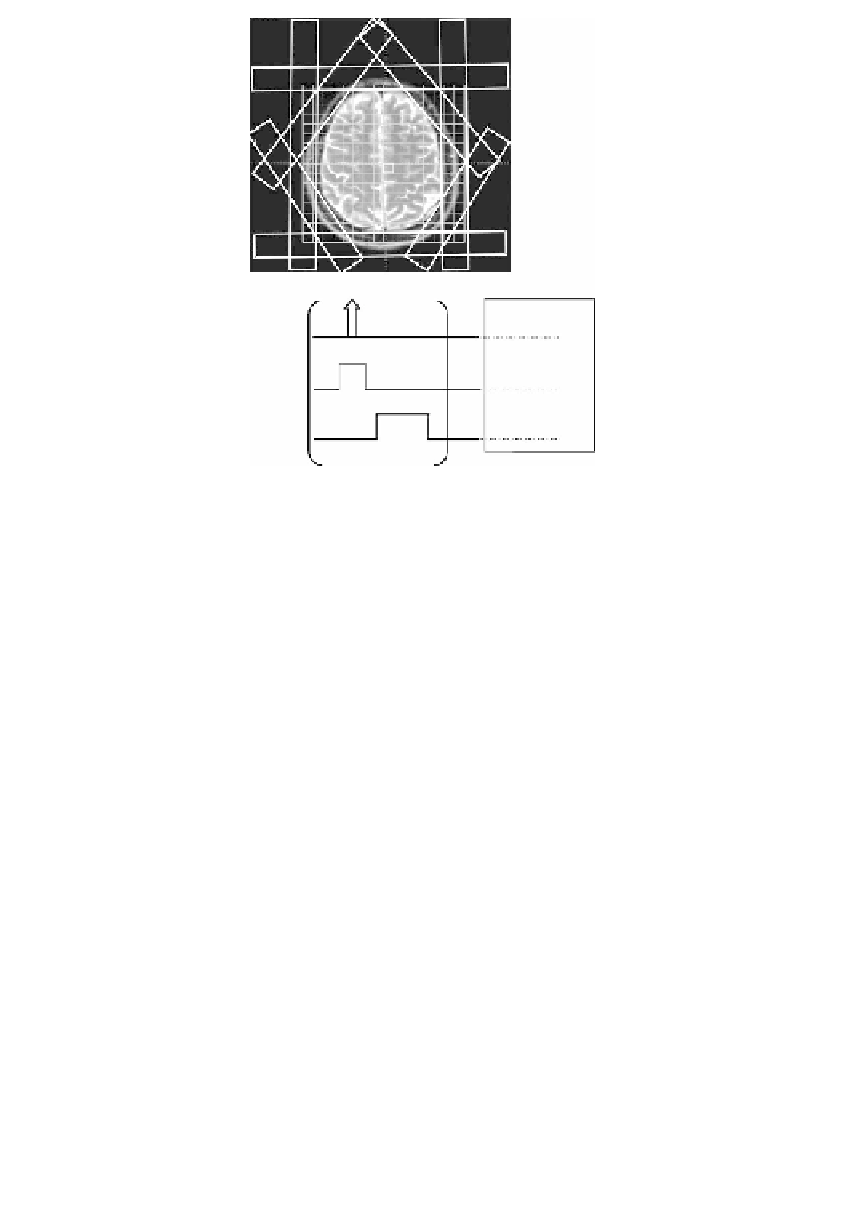Image Processing Reference
In-Depth Information
α
rf
CSI sequence
G
slice
G
spoil
n
FIGURE 11.15
Outer-volume suppression technique. (a) The signal from the subcutane-
ous fat is saturated using eight saturation slices depicted as white rectangles. The positions
and the thicknesses of the slices are adjusted before the measurement. (b) The scheme of
the OVS sequence. The OVS sequence precedes the CSI sequence.
of the sequence in terms of spoiling all unwanted transverse components of
180
pulses is necessary.
The disadvantage of volume preselection by PRESS or STEAM is the
rectangular shape of the VOI. This restricts the size of the excited area, espe-
cially in the brain. Alternatively, by using 2-D pulses for excitation, a more
general VOI shape can be selected (34). To avoid undesired signals, another
method, called outer-volume suppression (OVS) (33,35,36), can also be used.
In OVS, areas with spurious signals are saturated by slice selective pulses before
the CSI sequence starts. Several saturation slices are available to cover regions
to be suppressed, as shown in Figure 11.15a. After each saturation slice is
excited, the generated transverse magnetization is spoiled by the crusher gra-
dient as shown in Figure 11.15b. Because the profiles of the slices are never
exactly rectangular (which is especially relevant for large slice thicknesses),
saturation slices positioned too close to the area of interest can result in partial
suppression of the signals inside the area. In the case when a very large area
is to be suppressed, one thick slice can be replaced by two thinner adjoined
slices, with the better profile. Because saturation pulses are applied in the pulse
train, relaxation of saturated magnetizations during the time between the satu-
ration pulse and the first excitation pulse should be taken into account, espe-
cially when many slices are used. This can be solved by varying flip angles of
the saturation slices depending on their position in the saturation sequence.
°






































Search WWH ::

Custom Search